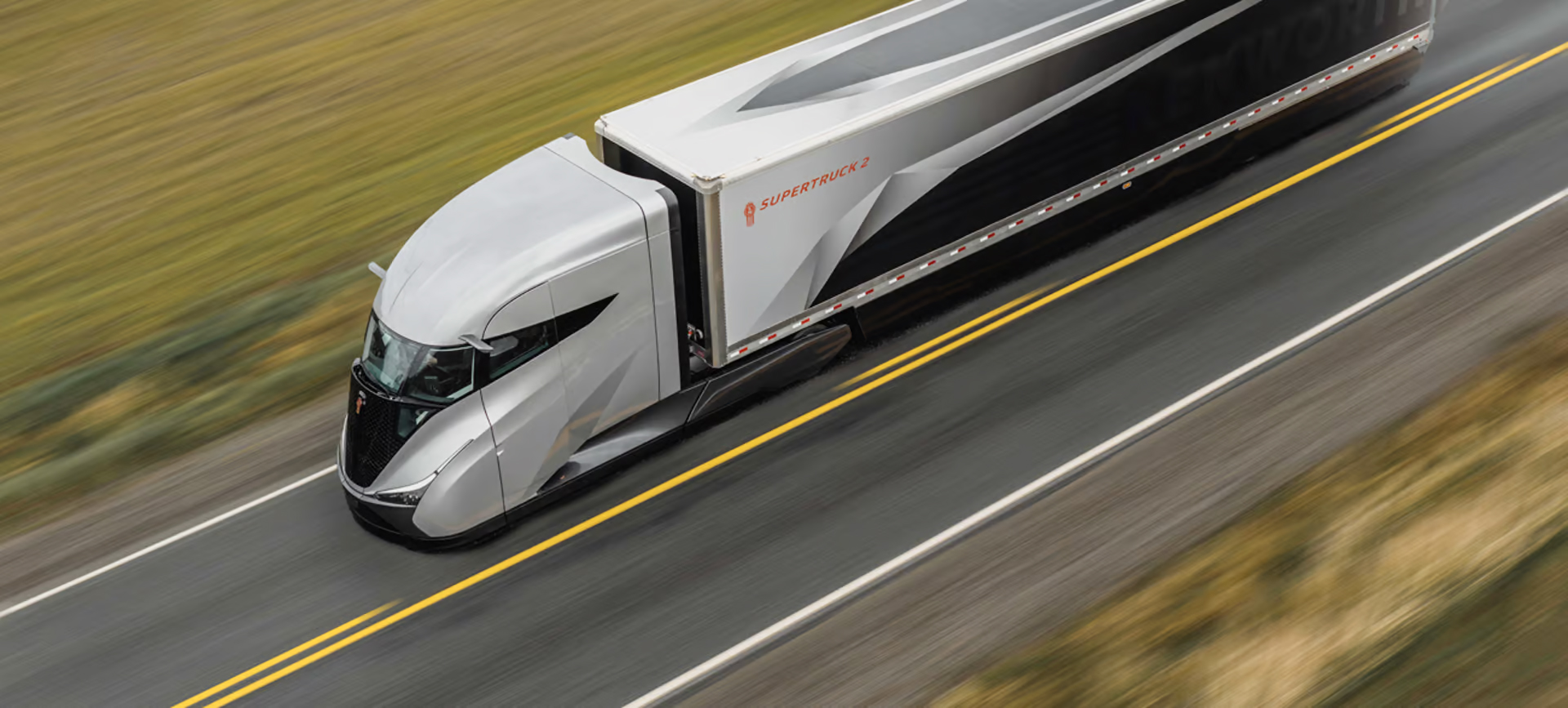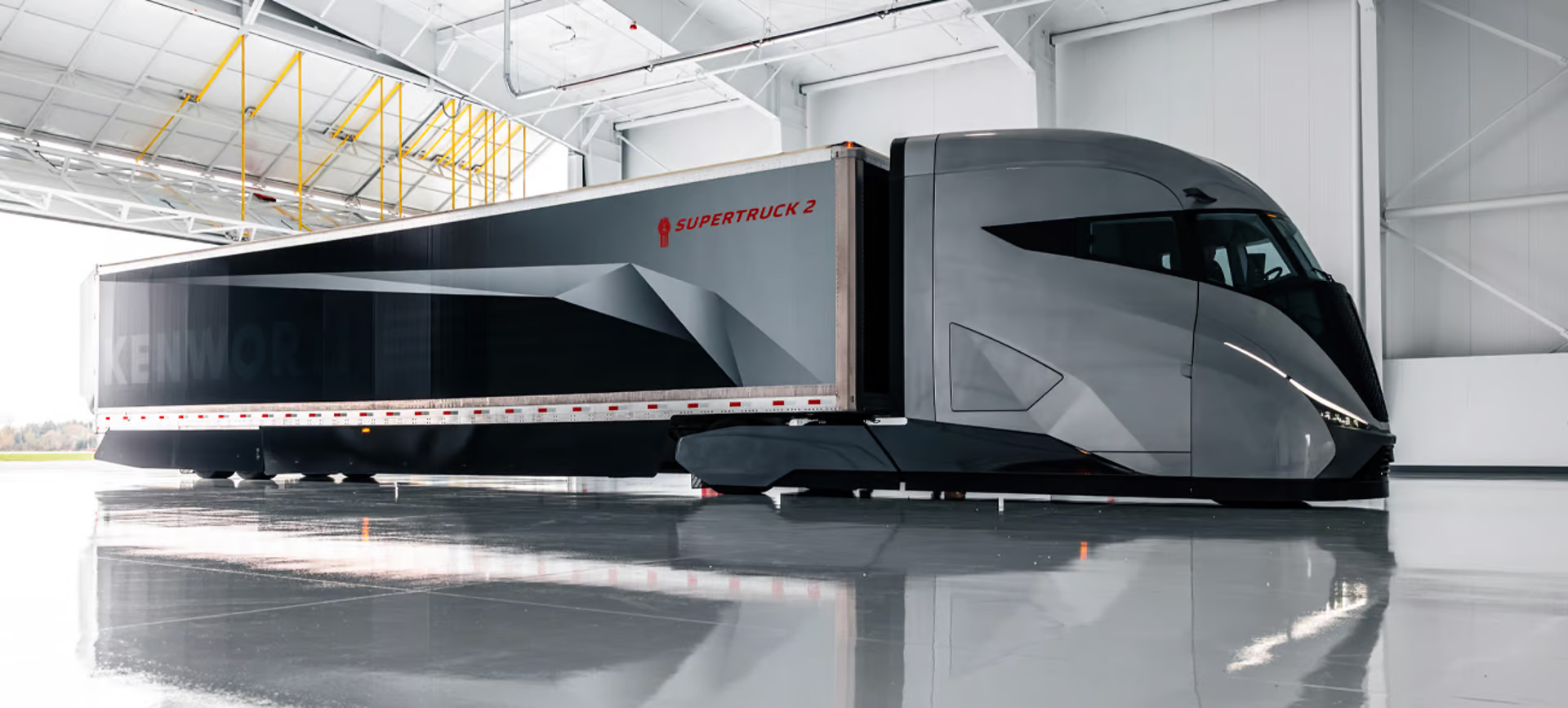Supertruck 2: from science fiction to fact
Supertruck 2: from science fiction to fact
JACO DE KLERK has always been fascinated by concept vehicles. It’s amazing what designers and engineers can achieve when given a blank canvas and free rein…
When I started writing for this industry more than a decade ago, concept trucks seemed to belong more in the realm of science fiction. Back then, these masterpieces of the mind pushed the boundaries of automation and alternative drivetrains, capturing the imagination of millions.
Fast forward a decade, and these “pie in the sky” ideas have made it onto production lines. This is wonderful, but has left me wondering: “Where do we go to from here?” In recent years, concept vehicles still debuted at various shows, but it seemed as if the “whimsy” had been neglected, and the reality of advancement had taken hold of the reins.
Enter the Kenworth SuperTruck 2: a demonstrator vehicle that has reignited the flames of the imagination. “Blade Runner, Mad Max, and RoboCop rolled into one,” was the phrase one Automotive News reporter used to describe the SuperTruck 2 at the recent Advanced Clean Transportation Expo in Las Vegas, US.
The truck was developed over a six-year period as part of a collaboration between PACCAR – the holding company for Kenworth, Peterbilt, and DAF in the US – and the US Department of Energy’s (DOE’s) SuperTruck programme. The aim was to challenge truck makers to improve freight efficiency using a diesel engine as the main power source. This is wonderful, as diesel drivetrains will still play a vital role in Africa’s transport industry well into the future… although I doubt that the ST2 will make it to this continent.


“The goal was a 100% freight efficiency improvement over our 2009 Kenworth T660, which at the time was arguably the most fuel-efficient truck in the industry. We surpassed the performance of that model to improve efficiency by up to 136%,” said Jim Walenczak, general manager of Kenworth and PACCAR’s vice president.
“This was realised through a combination of improving fuel efficiency up to 12.8mpg (5.4km/l), while reducing our combination weight by more than 7,000 pounds (3,175kg). The result was the ability to haul more payload with an ultra-fuel-efficient tractor-trailer combination. SuperTruck 2 provided us with the opportunity to investigate new technologies in an early stage. We learned what worked and what didn’t. As a result, we are able to commercialise new technologies much quicker than we would have otherwise.”
The unique look of the Kenworth catches most of the attention, but the powertrain and driver amenities are just as impressive. “We started with an ideal aerodynamic shape when we started the design of SuperTruck 2,” said Joe Adams, Kenworth’s chief engineer. “At the start of the project, we asked ourselves, ‘What does the next generation vehicle for long haul transportation look like?’ What we produced pushes the limits in reducing aerodynamic drag, while it also incorporates a new powertrain. But, with everything Kenworth, we wanted the SuperTruck 2 to embody ‘The Driver’s Truck’. The result was a systematic approach to developing a futuristic looking, yet relevant, vehicle with technologies that have the potential to be refined and commercialised.”
Kenworth’s SuperTruck 2 utilises a PACCAR MX-11 engine, rated at 440hp (328kW), driven through a PACCAR TX-12 automated transmission. In addition, the truck features a 48-V electric generator. This creates a “mild” hybrid system and leverages next generation lithium-ion batteries that are recharged through regenerative braking. This allows Kenworth’s SuperTruck 2 to operate electric fans and electric steering, as well as power for electric coolant and heating, ventilation, and air conditioning (HVAC) pumps, which were previously mechanically driven. The hybrid system also provides an overnight engine-off “hoteling” solution, ensuring that drivers are comfortable when they’re parked.
The SuperTruck 2 team managed a parallel project for energy efficiency testing by combining a PACCAR MX-11 based engine, the mild hybrid-based 48-V auxiliaries, and energy waste recovery to bench test a programme record 55.7% engine efficiency. “We did this while keeping in mind (that) the technologies we developed needed to be commercially viable,” said Maarten Meijer, PACCAR’s senior engineering manager for advanced technology. “Today’s modern diesel engine demonstrates around 47% efficiency. Reaching 55.7% was a major step forward and could only be done by applying new technologies that had not been explored until today. To put that efficiency number into perspective, if this engine were to go into production, it would lead to a 10% fuel efficiency improvement. That’s an astonishing number.”
The unique look of Kenworth’s SuperTruck 2 features a “centre driver” cab, along with a new sleeper compartment; it’s a look that resembles a bullet train. “We wanted to push this beyond just a demonstrator truck,” said Jonathan Duncan, Kenworth’s design director. “We wanted to show something dynamic, and what the future of Kenworth might look like. Our headlamps take up the entire front fender of the truck. It’s striking – you can’t miss it as it’s going down the road.”
The aerodynamic design was possible thanks in part to the location of the powertrain content, which fits between the frame rails. This also allowed the engine to be lowered and placed behind the front axle. A reverse-splayed chassis allowed the engineering team to narrow the front of the truck and fully enclose the wheels within the bodywork. The entire hood and the chassis fairings were mounted directly to the cab, and they move with the entire cab as one unit. A variable suspension system was developed to customise ride height and optimise aerodynamics – Kenworth’s SuperTruck 2 can be raised over rough roads to avoid obstacles, then brought back down when running over smoother surfaces. Combined, the sleekness means a 48% reduction in drag compared to Kenworth’s baseline vehicle.
Even though SuperTruck 2 is powered by a diesel engine, Kenworth is thinking of the future: the overall layout was designed to be powertrain agnostic. To support zero and near-zero emission solutions, the truck can efficiently package fuel cells, hydrogen tanks, natural gas tanks, or batteries without changing the basic cab – which, let’s face it, is the most exciting thing about a truck that has reignited the sci-fi appeal of concept vehicles.
Published by
Jaco de Klerk
focusmagsa




